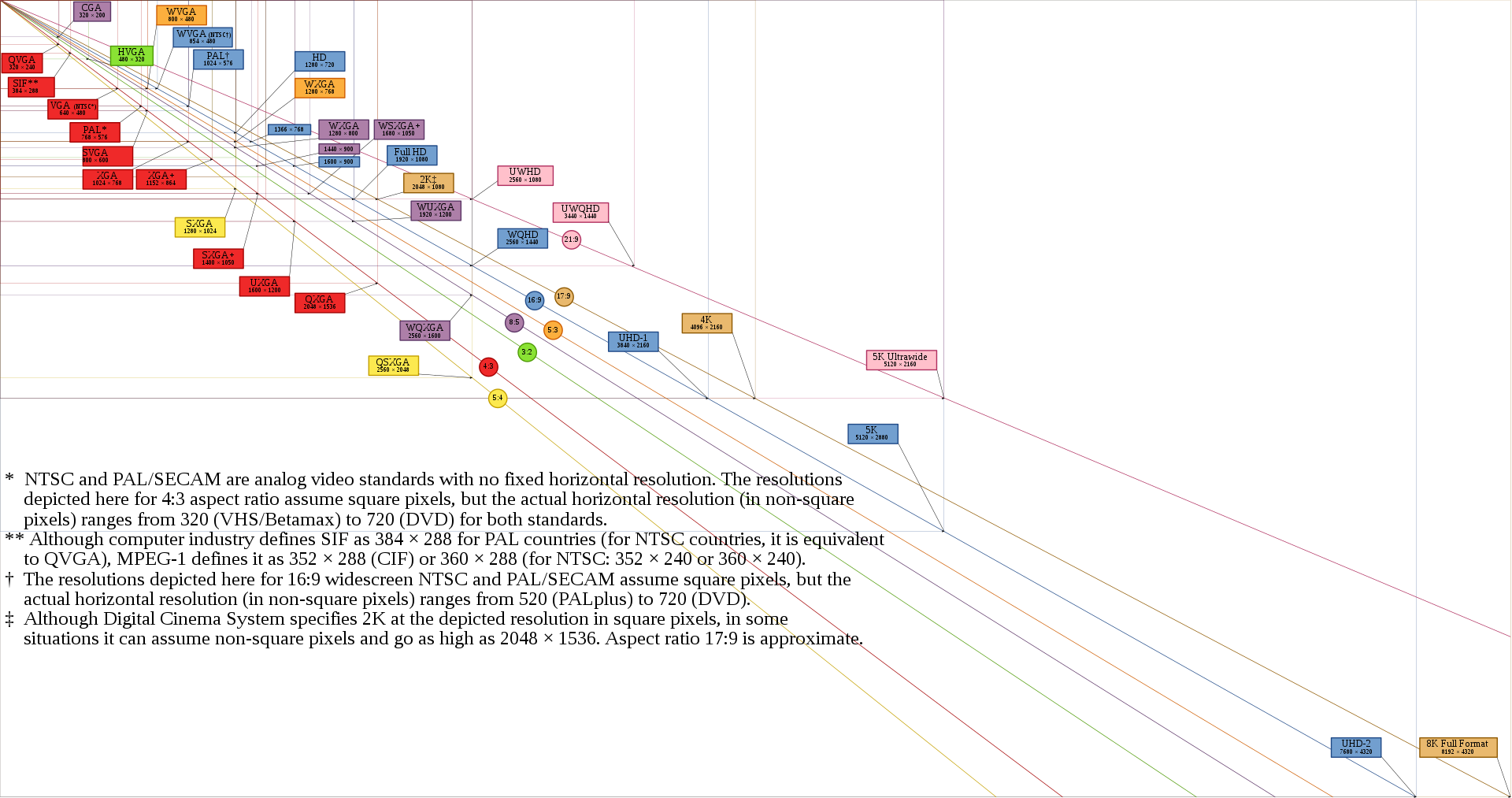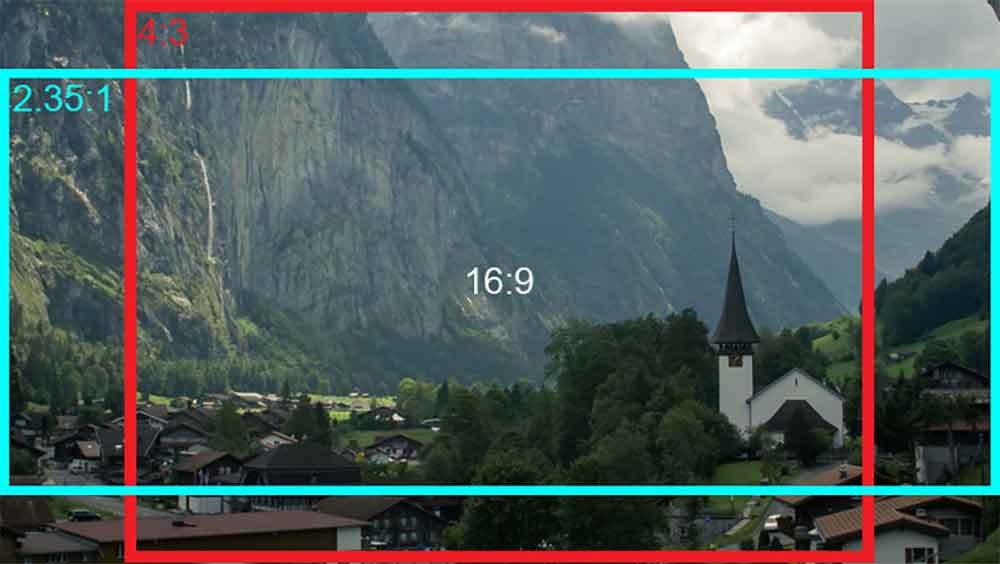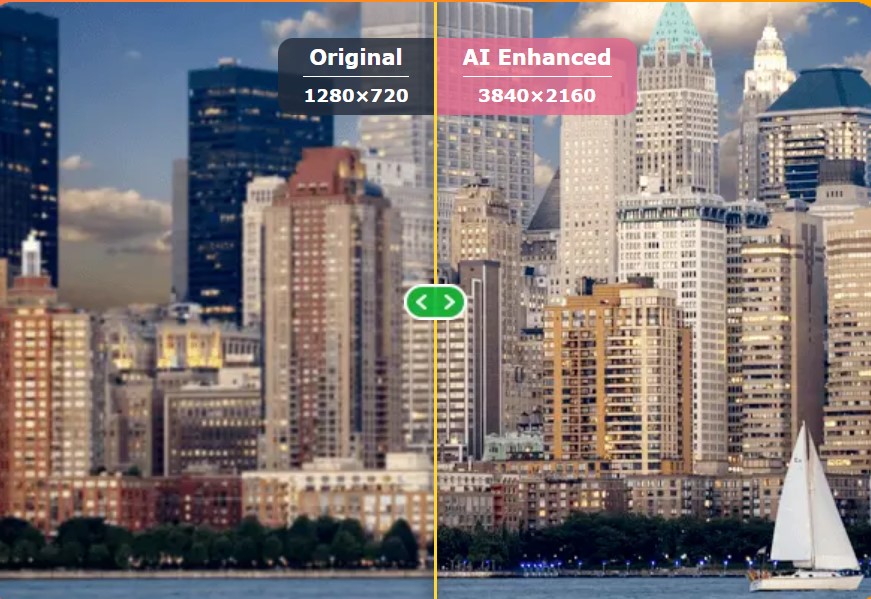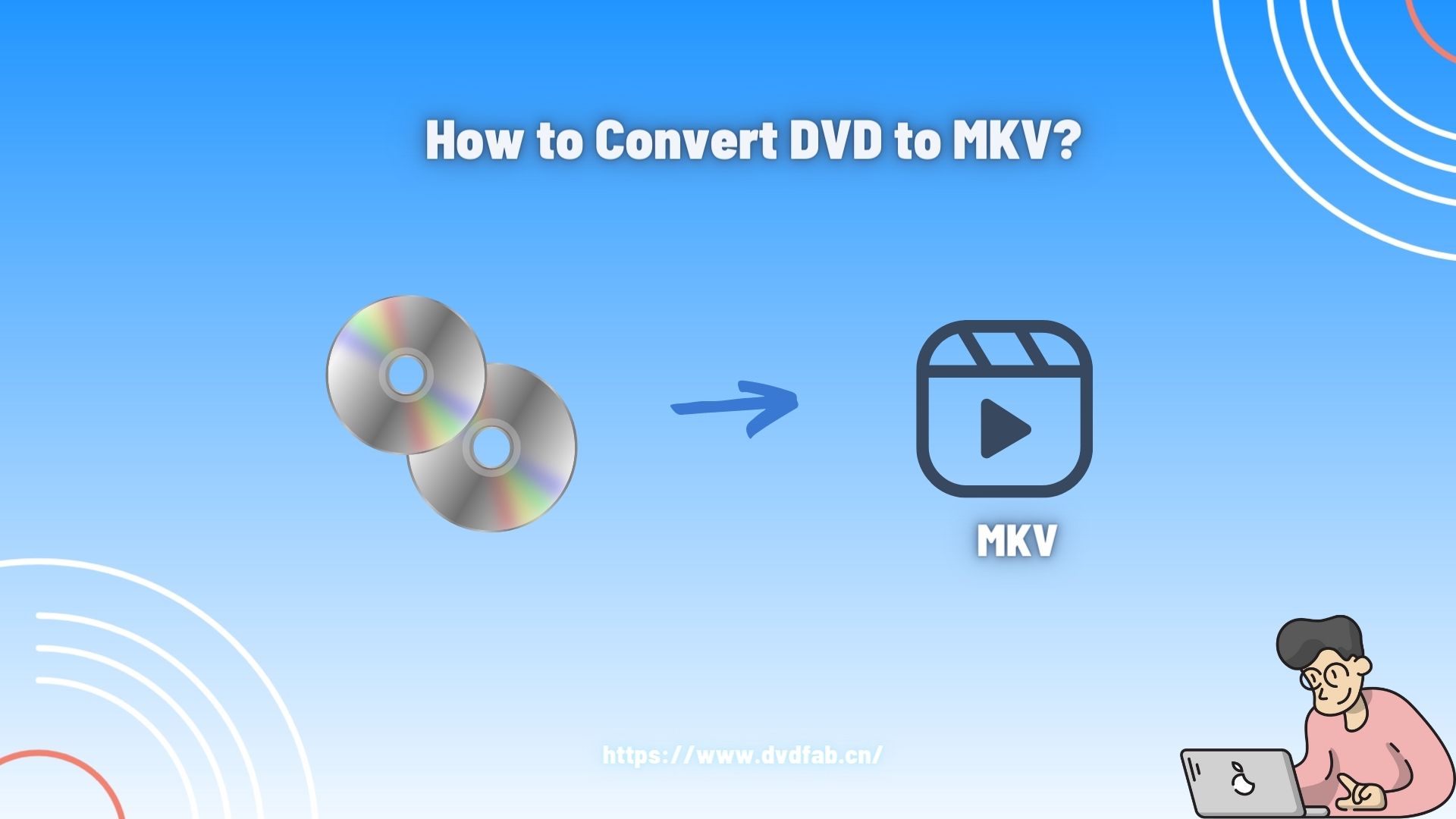What are 16:9 Resolutions & 4:3 Resolutions?
Summary: With the advance in technology, we have made great strides in the aspect of the screen display. From the beginning 4:3 resolution to the popular 16:9 resolution, what’s the difference between these two types of ratio resolutions? Which is more capable to provide a better watching experience? What are the 16:9 resolutions? If you are curious about these issues, this post will give you a comprehensive explanation.
Table of Contents
What is Display Resolution?

The display resolution (display modes of digital television, computer monitor, or display device) refers to the number of distinct pixels in each dimension that can be displayed. Subject to the control of multiple factors, including cathode ray tube (CRT) displays, flat-panel displays (including liquid-crystal displays), this terminology can be a little bit confusing. Under most circumstances, we quote is as width × height, with the units in pixels: for example, 1920 × 1080 means the width is 1920 pixels and the height is 1080 pixels.
The Importance of High Resolution

High resolution is an important prerequisite for ensuring the clarity of color displays. The dot pitch of the monitor is one of the foundations of high resolution. The dot pitch of large-screen color monitors is generally 0.28, 0.26, 0.25. The other aspect of high resolution refers to the maximum pixel points that the display can achieve in terms of horizontal and vertical display. Generally, there are 320×240, 640×480, 1024×768, 1280×1024, etc., and a good large-screen color display.
It can usually reach a resolution of 1600×1280. Higher resolution not only means higher definition but also means that more content can be displayed in the same display area. For example, in the mode of 640×480 resolution, only one page of content can be displayed. While, if you adopt the resolution of 1600×1280, two pages can be displayed simultaneously.
What is the 4:3 Aspect Ratio?
4:3 Aspect Ratio refers to the width and height of pictures 4 units wide by 3 units tall. This word is also known as 1.33:1 and is frequently pronounced Four-Three, Four-to-Three, or Four-by-Three. From the early twenty century, when television displays and computer monitors were first introduced, the 4:3 Aspect Ratio was prevalent.
The History of 4:3 Aspect Ratio
In 1888, Thomas Edison filed a document with the US patent office in which he conceived of “a device that would do for the eye what the phonograph does for the ear.” But before this team could build their first motion picture camera they needed to establish the size of the film they would use. Dickson cut the original film in half. Punches 64 perforations every foot and 35mm film is born. For some unknown reasons, Dickson set on the image being 4-perforation high. Therefore, the first aspect ratio is created:1.33.
In the 1950s, the invention led to the revenues of theater declining dramatically, Hollywood looked to widescreen to attract audiences back. As a result, the majority of the movies tend to adopt a new aspect ratio. As displays and monitors did not employ “technical” ratios like 1.33 or 1.37, 4:3 was born with the introduction of television screens.
In terms of televisions, they remained 4:3 for most of the twentieth century. It wasn’t until the 1990s that the concept of larger television screens became popular, and the 4:3 aspect ratio was replaced by the 16:9 aspect ratio.
The Features of 4:3 Aspect Ratio
For environmental
Due to the lack of width, significant compositional factors are usually positioned vertically within the frame, which exposes the drawbacks of 1.33 frame: it is not suitable for landscape scenes.
For singles
1.33 is best for single shots because the actors’ faces could exactly fill the frame and the audience will not feel confined in the meantime. Owing to its limits on scopes, the background seldom leads to distraction.
For groups
Groups of two can produce a very intimate frame, and it is difficult for larger groups to produce good effects. Horizontal arrangements will make the frame look cramped.
Generally speaking, the 1.33 frame tends to be more effective when the frame only has a single point of interest or focus. And it seems to perform well in handling two things simultaneously, not to mention displaying landscape.
What is the 16:9 Aspect Ratio?
16:9 (1.77:1) is a widescreen aspect ratio with a width of 16 units and a height of 9. It is the international standard format of HDTV, non-HD digital television, and analog widescreen television PALplus.
The History of 16:9 Aspect Ratio
In 1984 when 4:3 aspect ratio was popular, Dr. Kerns H. Powers, a member of the SMPTE Working Group on High-Definition Electronic Production, first proposed the 16:9 (1.77:1) aspect ratio. At the very beginning, 16:9 was considered a compromise format, while the subsequent appearance of popular HDTV helped the 16:9 aspect ratio become the most common video aspect ratio in use.
From the late 2000s to the early 2010s, the computer industry gradually from 4:3 to 16:9 and regarded 16:9 as the most common aspect ratio for monitors and laptops.
The Features of 16:9 Aspect Ratio
One of the best resolutions you can hit with a 16:9 aspect ratio is 4K or 3840 px by 2160 px.
- 16:9 is in accord with the eyes of human
Scientists found out that the pupil ratio of human eyes is also exactly 16:9, which meant the field of view is a rectangle with a length-to-width ratio of 16:9. This major discovery resulted in significant reforms in the TV industry. Therefore, in order to provide more comfortable service, a growing number of manufacturers started to adopt this aspect ratio.
- High-quality pictures
With regard to user experience, the monitors that use a 16:9 aspect ratio display better results resulting from no black panels on the sides of the screen. Besides, one of the best resolutions the users can hit with a 16:9 aspect ratio is 4K or 3840 px by 2160 px. The high resolution could offer a better watching experience.
Aspect Ratio and Resolution
The resolution or display modes of digital television, computer monitor or display device is the number of distinct pixels in each dimension that can be displayed. For every aspect ratio, there are several counterpart resolutions. Sometimes, you may find that if you choose the wrong options, certain parts of the movie will be either cut off or the videos have much padding around them. Therefore, to enjoy the best watching experience, we need to select the appropriate aspect ratio and resolution.
16:9 Resolution
With regard to the video aspect ratios, there is no one-size-fits-all option. Generally speaking, the aspect ratio will be chosen according to where the video will be posted, how it will be viewed, and what purpose it serves.
16:9 aspect ratio also referred to as “1.71:1”, is a wide rectangle and is considered an international standard format for TV, cinema and major online platforms. One of the best 16:9 resolutions (or 16 by 9 resolutions, 16:9 screen resolutions) is 4K or 3840 px by 2160 px. 16:9 resolutions are typically seen as optimal for their capability of the highest resolution. No matter you want 4K or even 8K, 16:9 resolutions will meet all your demands. There are some common 16:9 aspect ratio resolutions: 1024×576, 1152×648, 1280×720, 1366×768, 1600×900, 1920×1080, 2560×1440 and 3840×2160.
4:3 Resolution
The 4:3 aspect ratio was the first standard for traditional television and computer monitors. The invention of HDTV resulted in the decline of 4:3. With the demand for high-definition monitors, 4:3 resolutions have gradually been replaced by the popular 16:9 resolutions.
Recommendations for Best Watching Experience
If you are looking for a product that could provide a 4K watching experience, DVDFab is the one you are in extreme need of. The original DVDFab Player 6 has been updated to the advanced version: PlayerFab Ultra HD Player. More powerful functions are waiting for you to explore.
PlayerFab Ultra HD Player: Best Video Player for Windows
Operating system: Windows 11/10/8.1/8/7 (32/64 bit)
Price: $99.99/lifetime (30-day money return guarantee)
As one of the best media players for windows 10, PlayerFab Ultra HD Player aims to provide comprehensive functions to satisfy the demands of users as much as possible. It supports playback up to 4k Blu-ray and HDR10. This wonderful player enables users to play videos in 16:9 resolutions and higher ones.
- No limits on countries and regions
Region codes in commercial movie discs including DVD, Blu-ray, and 4K Blu-ray discs, will restrain DVD copies in case of illegal situations. However, with the help of PlayerFab Ultra HD Player, you don’t need to be concerned about this issue, for it is able to play all DVDs, Blu-rays, and 4K Blu-rays, free from the restraint of the countries and regions they are made in.
- Playback of Discs, ISO files, and folders
For DVD collection lovers who consider DVDs as an efficient method to keep outdated memories alive. However, physical discs are vulnerable to getting scratched, therefore coping discs such as ISO files or movie folders on your computer HDDs is a choice. This best media player for windows 10 enables users to play ISO files and folders without any problem.
- Playback at a high speed
Armed with a higher-level GPU from AMD, Intel, or NVIDIA, PlayerFab Ultra HD Player can use hardware decoding instead to improve the playback smoothness to the next level.
- Play all formats with ease
Apart from playback of DVDs, Blu-rays, and 4K Blu-rays, this universal media player can also playback all the popular and peculiar video and audio formats you know of. In terms of video, H.264, H.265/HEVC, MP4, MKV, MOV, FLV, VOB, M2TS, etc. In terms of audio, MP3, AAC, FLAC, AC3 5.1, and those previously mentioned HD audios. Moreover, playback of those video and audio files is totally free.
How to Use PlayerFab Ultra HD Player for a Better Experience?
1. Users could find their wanted functions in the left column. No matter you want to manage your local files or search for appealing online videos, you can finish within this all-featured media player.
2. Play your local videos, DVD/Blu-ray/UHD disc
3. Set your video to make a customized experience.

DVDFab Player 6

- Navigation Menu on DVDs, Blu-rays and 4K Ultra HD Blu-rays
No matter what form your file is, DVDFab Player 6 provides comprehensive support for navigation menu playback on DVDs, Blu-rays, and the new-generation 4K Ultra Blu-rays. Besides, the powerful player also supports Genuine discs, as well as ripped ISO image files or folders. Armed with DVDFab Player 6, there is no need to worry about compatibility problems and the cinematic experience is at the touch of a button.
- Hi-Res Audio Output Support, up to Dolby Atmos & DTS:X
As an outstanding player, DVDFab Player also attaches great importance to sound quality. Equipped with this edging technology, you could easily gain access to the lossless high-resolution audios, including Dolby Atmos, Dolby TrueHD, DTS-HD Master, and DTS:X, etc., with up to 7.1 channel surround sound output.
- Customized Settings Provide Best Experience
With DVDFab Player 6, if you want to watch a series of TV shows or collections, what you need to do is just drag & drop them into the playback window to create your own playlist. Keeping them in order by name, or by type are all supported. Besides, you could play 4K blu ray movies in order, repeat a single one or repeat all. There are more customized settings for you to explore to build your unique playlist.
DVDFab Video Enhancer AI

- Enhance video quality and enlarge low-res videos with the power of AI
With AI-based technology, DVDFab Video Enhancer AIprovides video quality enhancement and resolution enlargement. By combining AI technology with the powerful computing power of graphics cards, we can now enhance the quality of old videos and movies, deblock, deinterlace old videos, and even enlarge resolution up to 4K, all in a short period of time.
- Better image quality
Have you ever found that your memorable photo was broken or full of cringes owing to the abrasion of time or accidents? No worries. GPU-based machine learning, deep learning and computer vision, Video Enhancer AI can enhance image quality while achieving higher image fidelity. Your beautiful memory will never fade away.
FAQs
How to Calculate Aspect Ratio?
- Take your original height. In our example, it will be 1200 pixs.
- Take your original width.
- Divide the height by the width, e.g. 1200 / 1600 = 0.75.
- Multiply the quotient by the preferred width, e.g. 0.75 * 300 = 225.
- The resulting figure is your new height given in pixels.
1920 x 1080 is a 16:9 aspect ratio. By default, smartphones, DSLRs, and most modern camcorders record video at 1920 x 1080.
Standards can vary by regulating bodies such as the ATSC, DCI, CTA, and others, but in general, these are the most popular and recognized 16:9 resolutions: 720×480 (480p, SD) 960×540 (qHD) 1280×720 (720p, HD).
Conclusion
Having read this article, do you have a general understanding of these professional terms? The once-popular 4:3 resolution and now 16:9 resolution aim to provide the best watching experience. Although some forms of framing appear to come and go in popular culture, they never fully vanish. Hopefully, this post will be of help to you.



